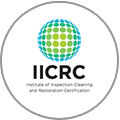Water damage can be a major problem for property owners, and it is important to address it quickly to minimize damage and prevent the growth of mold and mildew. The process of water extraction involves removing excess water from a space, ensuring that the environment is safe and dry. This requires a systematic approach that involves damage assessment, planning, implementation, and post-extraction cleaning.
During the water extraction process, various techniques are employed depending on the extent and type of water damage. Extraction points are identified, and the necessary equipment and manpower are determined for efficient and effective extraction. Safety precautions are also implemented to mitigate risks during the process.
Creating a safe and dry environment is critical to reduce the potential for further damage and to restore the property to its pre-damage condition. The process of water extraction plays a crucial role in achieving this goal.
Key Takeaways
- The process of water extraction involves removing excess water from a space to create a safe and dry environment.
- A systematic approach is required for efficient and effective extraction, including damage assessment, planning, implementation, and post-extraction cleaning.
- Various techniques are employed depending on the type and extent of water damage, including pumping, vacuuming, and dehumidification.
- Safety precautions are important to mitigate risks during the water extraction process.
- Cleaning and disinfecting are necessary after extraction to prevent mold growth and promote a safe environment.
Assessing the Water Damage
When dealing with water damage, assessing the situation is key to successful restoration. Before starting the water extraction process, it’s important to evaluate the extent of the damage and identify the source of the water intrusion. This will help determine the necessary steps needed to achieve full removal of the water damage from the affected space.
| Damage Assessment Checklist | Water Extraction Equipment Checklist |
|---|---|
|
|
Keeping safety in mind, it’s important to ensure that all necessary equipment is in working order and that all operators know how to use it properly.
Overall, proper assessment of the water damage will guide the development of an effective water extraction plan, minimizing further damage and ensuring a successful restoration process.
Planning for Water Extraction
Developing a comprehensive extraction plan is crucial for minimizing risks and ensuring a safe and efficient process. Start by identifying all extraction points and assessing the necessary equipment and manpower for each location. This includes pumps, vacuums, and dehumidifiers.
Tip: Consider the safety of all individuals involved, particularly those handling equipment and working in confined spaces. Implementing safety precautions, such as wearing appropriate personal protective equipment and using proper ventilation, is critical for creating a safe working environment.
| Extraction Plan Checklist: | Safety Precautions Checklist: |
|---|---|
|
|
By following a detailed extraction plan and implementing necessary safety precautions, professionals can effectively and efficiently extract water from a variety of sources, minimizing damage and ensuring a safe working environment.
Implementing the Water Extraction Process
After a thorough damage assessment and planning, it’s time to put the water extraction process into action. Depending on the extent and type of water damage, different water extraction techniques might be necessary.
For minor water damage, a wet/dry vacuum might be sufficient to remove the water. For more severe cases, specialized pumps might be required to extract large volumes of water quickly. In situations where there is standing water, submersible pumps are typically used to remove the water from the affected area.
| Water Extraction Techniques | Description |
|---|---|
| Pumping | Submersible pumps are used to remove large volumes of standing water. |
| Vacuuming | Wet/dry vacuums are used to remove water from smaller areas or surfaces. |
| Dehumidification | Industrial dehumidifiers are used to remove moisture from the air, promoting drying and preventing the growth of mold. |
In addition to water extraction techniques, specialized drying equipment may also be used to effectively remove moisture from the affected area. This equipment includes air movers and dehumidifiers. Air movers are high-powered fans that circulate air, aiding in the evaporation of moisture. Dehumidifiers help balance humidity levels, removing excess moisture from the air and promoting drying.
Proper implementation of the water extraction process is critical to mitigating water damage and preventing secondary issues such as mold growth.
Cleaning and Disinfecting
After successfully extracting the water, the next critical step is thorough cleaning and disinfection to prevent mold growth and restore a safe environment. Some recommended practices include:
- Sanitization: Use antimicrobial agents to sanitize all surfaces affected by water damage. This process destroys any bacteria or germs that can cause health issues to occupants.
- Mold prevention: Mold can grow within 24-48 hours after water damage, which can lead to significant health issues. To prevent mold growth, use specialized equipment such as air movers and dehumidifiers to dry out the area. Ensure that all surfaces are dry before beginning the cleaning and disinfection process.
- Proper ventilation: Proper ventilation plays a crucial role in promoting drying and preventing mold proliferation. Open all doors and windows to allow fresh air into the affected area. Use fans or air movers to create a steady flow of air, which helps to speed up the drying process.
Cleaning and disinfection is a comprehensive process that should be performed by a professional. A reputable water damage restoration company has a team of experts who have the necessary knowledge and tools to perform all aspects of the cleaning and disinfection process safely and efficiently.
Conclusion
As you have learned, water extraction is a crucial process in mitigating water damage and creating a safe and dry environment. By assessing the damage, planning for extraction, implementing the process using proper techniques and equipment, and cleaning and disinfecting the affected area, professionals can effectively restore properties and prevent further damage.
Remember, comprehensive planning and safety precautions are essential before initiating the water extraction process. This includes identifying extraction points, determining necessary equipment and manpower, and implementing safety measures to mitigate potential risks.
Cleaning and disinfecting the affected area is also critical after successful water extraction. Proper cleaning practices, the use of antimicrobial agents, and proper ventilation can prevent mold growth and ensure a safe and healthy environment for occupants.
Whether dealing with residential or commercial water damage, the water extraction process plays a crucial role in restoring normalcy. By following a systematic approach, professionals can ensure efficient and effective water extraction, minimizing damage and restoring properties to pre-loss conditions.
FAQ
What is the process for water extraction?
The process for water extraction involves several steps to effectively remove water from various sources. It typically includes pumping or vacuuming out the water, using specialized drying equipment such as dehumidifiers, and implementing thorough cleaning and disinfection techniques.
Why is assessing the water damage important?
Assessing the water damage is crucial to understand the severity of the situation and determine the appropriate course of action for water extraction. It helps identify the source of water intrusion and enables professionals to use the right equipment and techniques for efficient removal and damage mitigation.
What should be considered when planning for water extraction?
When planning for water extraction, it is important to identify extraction points, determine the necessary equipment and manpower, and implement safety precautions to ensure a smooth and safe process. Creating a comprehensive extraction plan helps organize the workflow and minimize risks.
What techniques are used in water extraction?
Different techniques are used in water extraction depending on the type and extent of the water damage. These techniques may include pumping, vacuuming, and dehumidification. The specific method chosen will depend on factors such as the volume of water and the affected surfaces.
Why is cleaning and disinfecting important after water extraction?
Cleaning and disinfecting are crucial after water extraction to prevent mold growth and ensure a safe environment. Thorough cleaning practices, the use of antimicrobial agents, and proper ventilation help eliminate any remaining moisture and minimize the risk of mold proliferation.






